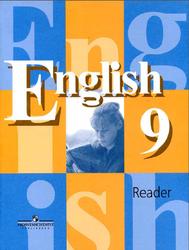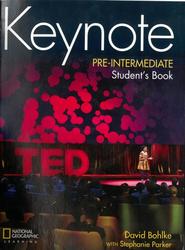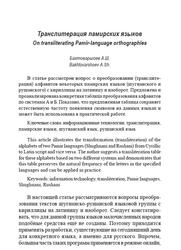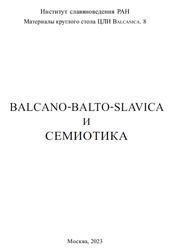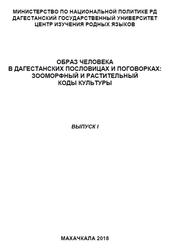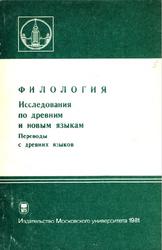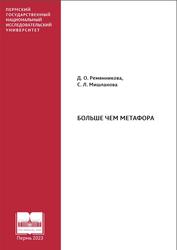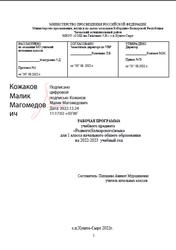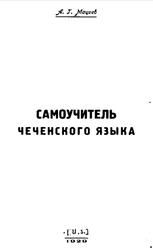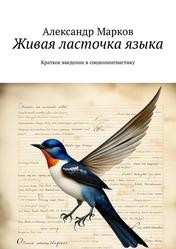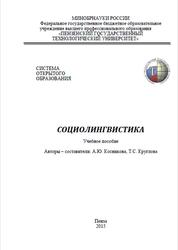This dissertation provides a comprehensive grammatical description of Shughni, an understudied Eastern Iranian language spoken in Afghanistan and Tajikistan. Contributing to this goal are three primary objectives: (I) to identify, analyze, and describe areas of the language’s grammar which have heretofore not been investigated; (II) to synthesize and build upon existing research on the language, much of which was published in Russian during the Soviet era and has therefore been hard to access for many scholars outside the former Soviet Union; and (III) to point out phenomena in Shughni which are not covered in depth here and are ripe for future investigation. Novel contributions of this thesis include, among others, an analysis of definiteness in Shughni nominals, a thorough description of the language’s system of triple deixis, particularly as it pertains to demonstratives and adverbs, and a description of tense and aspect situated in a Neo-Reichenbachian framework. It provides a thorough description of morphosyntactic alignment in Shughni from synchronic, diachronic, and typological perspectives, and it builds upon the work of Soviet-era scholars in providing a historical account of several irregularities found in the modern Shughni verbal system, notably the suppletion in infinitive, present, and past stems, as well as the development of syncretism in feminine and plural past and perfect forms. Ultimately, it is the author’s hope that this thesis will both contribute to the documentation of Shughni and spur future research into un(der)-investigated areas of its grammar.
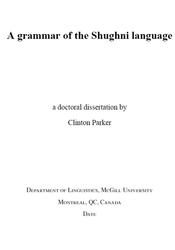
Sociolinguistic information.
By most estimates, the number of Shughni speakers is roughly 100,000 (e.g., Edelman & Yusufbekov 2000; Edelman and Dodykhudoeva 2009b), a figure which includes the speakers of Afghan and Tajik Badakhshan, of which about 20,000 are residents of Khorog, as well as diaspora communities elsewhere in these countries and in other parts of the world. Significant communities of Shughni speakers are found in Kabul, Dushanbe, and other areas of Tajikistan and Afghanistan outside Badakhshan, as well as in Russia, Canada, and the United States.
Although it may be said that the vitality of Shughni is threatened to some extent due to external political and economic pressure, most notably from Tajik and Russian, the language is still transmitted orally from generation to generation and is the primary means of communication for ethnically Shughni families both within and outside Badakhshan. Shughni, which does not have official status in Tajikistan, together with Russian and Tajik, both of which do have official status in the country, is one of the languages used for communication among speakers of different Pamir languages, and can therefore be thought of as a lingua franca of the region. Additionally, there are ongoing efforts led by native-speaker academics, community members, and outsider academics to preserve the language and encourage its widespread usage in the community (see Dodykhudoeva & Ivanov 2008 and references therein).
Contents.
1 Introduction.
1.1 Geography of the Shughni-speaking region.
1.2 Sociolinguistic information.
1.3 Previous research on Shughni.
1.3.1 Early works on Shughni.
1.3.2 Works on specific aspects of Shughni.
1.3.3 Grammatical sketches and dictionaries.
1.4 Impetus for the present study.
1.5 Methodology.
1.5.1 Data from fieldwork sessions.
1.5.2 Data from natural speech.
1.5.3 Data from previous publications.
1.6 Overview of thesis.
I Preliminaries.
2 Historical and genealogical considerations.
2.1 Broad genetic relations: Indo-Iranian.
2.2 Old, Middle, and Modern Iranian languages.
2.2.1 Old Iranian.
2.2.2 Middle Iranian.
2.2.3 Modern Iranian.
2.3 Eastern vs. Western Iranian languages.
2.4 Pamir languages.
2.5 Shughni-Rushani Subgroup.
2.6 Historical and genealogical considerations: Summary.
3 Sound system and orthography.
3.1 Phoneme inventory.
3.1.1 Consonants.
3.1.2 Vowels.
3.2 Phonotactics.
3.2.1 Overview and permitted syllable shapes.
3.2.2 Coda clusters.
3.2.3 Resolution of illicit coda clusters in loanwords.
3.2.4 Social aspects of Shughni phonotactics.
3.3 Stress.
3.3.1 Stress and derivational affixes.
3.3.2 Stress and inflectional affixes.
3.3.3 Unstressed elements: Case-like suffixes and morphophonological clitics.
3.3.4 Stress in loanwords.
3.4 Orthography.
3.4.1 Latin script.
3.4.2 Cyrillic script.
3.4.3 Arabic script.
3.4.4 Orthography used in this thesis.
3.4.5 Shughni scripts side-by-side.
4 Grammatical Overview.
4.1 Typological overview.
4.2 Nominals.
4.2.1 Pronouns.
4.2.2 Nominal inflection.
4.2.3 Nominal derivation.
4.2.4 Order of elements in noun phrases.
4.3 Case-like suffixes & adpositions.
4.3.1 Case-like suffixes: Locative and dative.
4.3.2 Prepositions.
4.3.3 Postpositions.
4.4 Verbs.
4.4.1 Verb stems and verbal inflection.
4.4.2 Transitive, unergative, and unaccusative verbs.
4.4.3 Verbal inflection.
4.4.4 Complex verbs.
4.4.5 Passive-like constructions and causatives.
4.5 Complex clauses and question formation.
4.5.1 Complex clauses.
4.5.2 Question formation.
II Nominals.
5 Noun phrases, nominal inflection, and nominal derivation.
5.1 Content and reference of noun phrases.
5.1.1 Content, size, and order of elements in noun phrases.
5.1.2 Generic reference.
5.1.3 Indefinite reference.
5.1.4 Definite reference.
5.2 Number in nominals.
5.2.1 Additive plural.
5.2.2 Associative plural.
5.2.3 Similative plural.
5.2.4 Collective plural.
5.3 Nominal derivation.
5.3.1 Formation of nouns.
5.3.2 Formation of adjectives.
5.4 Numerals.
5.4.1 Numerals: Form.
5.4.2 Usage: Shughni vs. Tajik numerals.
6 Pronouns and Demonstratives.
6.1 Pronouns.
6.1.1 Personal pronouns.
6.1.2 Interrogative pronouns and wh-phrases.
6.1.3 Indefinite pronouns.
6.1.4 Reflexive and emphatic pronouns.
6.2 Demonstratives.
6.2.1 Form and syntax of demonstratives.
6.2.2 Exophoric uses of demonstratives.
6.2.3 Endophoric uses of demonstratives.
6.2.4 Deictic presentatives.
7 Grammatical Gender in Nominals.
7.1 Overview of grammatical gender in Shughni.
7.2 Historical considerations in Shughni grammatical gender.
7.2.1 Old Iranian basics.
7.2.2 Factors moderating sound change.
7.2.3 Sound changes affecting the expression of gender.
7.3 Morphological expression of gender in Shughni nominals.
7.3.1 Expression of gender in Shughni nouns.
7.3.2 Expression of gender in Shughni adjectives.
7.3.3 Gender concord in noun phrases (vs. verb phrases).
7.4 Gender assignment in nouns.
7.4.1 Overview of gender assignment: Three primary factors.
7.4.2 Thematic classes and grammatical gender.
7.4.3 Other semantic factors in gender assignment.
III Verbs.
8 Verb Stems, Inflection, and Modification.
8.1 Verb stems and usage.
8.1.1 Verb-stem paradigms.
8.1.2 Basic uses of verb stems.
8.2 Verbal inflection.
8.2.1 Person and number agreement.
8.2.2 Verbal negation.
8.3 Copular constructions.
8.3.1 Second-position copular clitics.
8.3.2 Copular verb vidow.
8.3.3 Compatibility of the copula with different lexical classes.
8.3.4 Existential and possessive constructions.
8.3.5 Summary: Copular constructions.
8.4 Verbal and predicate modification.
8.4.1 Types and order of adverbs.
8.4.2 Adverbial derivation and morphology.
8.4.3 Adverbs of degree.
8.4.4 Epistemic adverbs.
8.4.5 Deictic adverbs.
9 Regular and Irregular Verbs.
9.1 Regular and irregular verbs.
9.1.1 Monosyllabic and polysyllabic stems.
9.1.2 Regular verbs.
9.1.3 Irregular verbs: Consonant alternations.
9.1.4 Irregular verbs: Vowel alternations.
9.1.5 Verb-stem shortening.
9.2 Gender in verbs.
9.2.1 Which verbs distinguish gender?.
9.2.2 Historical considerations in gender-distinguishing verbs.
9.2.3 Vowel and consonant alternations in past and perfect stems.
9.2.4 Gender distinction in onomatopoeic verbs.
9.3 Recent and ongoing changes in Shughni verb stems.
9.3.1 Borrowings in the Shughni verb system.
9.3.2 Leveling in verb-stem paradigms.
10 TAM and Evidentiality.
10.1 Definitions and framework used for TAM.
10.2 Temporal and aspectual compatibilities of verb stems.
10.2.1 Present stems.
10.2.2 Past stems.
10.2.3 Perfect Stems.
10.2.4 Tense and aspect: Interim summary.
10.3 Infinitive stems and aspectual reference.
10.3.1 Progressive aspect.
10.3.2 Inceptive aspect.
10.3.3 Prospective aspect.
10.4 Grammatical expressions of mood.
10.4.1 Grammatical distinctions between realis and irrealis.
10.4.2 Types of irrealis clauses.
10.4.3 Mood: Summary.
11 Argument Structure and Transitivity.
11.1 Resultative participles and passive-like constructions.
11.1.1 Verbal resultative participles: Suffix -ak.
11.1.2 Adjectival passive participle: Suffix -in.
11.1.3 Summary: Resultative participles.
11.2 Causative.
11.2.1 Morphological causatives.
11.2.2 Periphrastic causatives.
11.2.3 Semantics of morphological and periphrastic causatives.
11.2.4 Section summary: Causatives.
11.3 Complex verbs.
11.3.1 Structure of complex verbs.
11.3.2 Transitivity in complex verbs.
11.3.3 Other issues in complex verbs.
11.4 Reflexive verbs.
11.5 Oblique-first constructions.
11.5.1 Accusative-first constructions.
11.5.2 Dative-first constructions.
11.5.3 Subjecthood and oblique-first constructions.
11.5.4 Summary: Oblique-first constructions.
IV Syntax.
12 Other Syntactic Phenomena.
12.1 Complex clauses.
12.1.1 Relative clauses.
12.1.2 Temporal adverbial clauses.
12.1.3 Other subordinate clauses.
12.1.4 Complement clauses and dependent speech.
12.1.5 Coordination of clauses.
12.1.6 Complex clauses: Summary.
12.2 Information structure and clause-level word order.
12.2.1 Expression of topic in Shughni.
12.2.2 Expression of focus in Shughni.
12.2.3 Information structure and clause-level word order: Summary.
12.3 Questions.
12.3.1 Wh-questions.
12.3.2 Polar questions.
12.3.3 Echo questions.
12.3.4 Other question particles.
12.3.5 Questions: Summary.
12.4 Morphosyntactic alignment and vestigial ergativity.
12.4.1 Morphosyntactic alignment: Overview and terminology.
12.4.2 History and diversity of morphosyntactic alignment in the Iranian past tense.
12.4.3 Morphosyntactic alignment in Shughni.
12.4.4 Morphosyntactic alignment in Shughni: Summary.
13 Conclusion.
Appendices.
Appendix A Nouns.
Appendix B Verb stems.
B.1 Consonant irregularities in verb stems.
B.2 Vowel irregularities in verb stems.
References.
Бесплатно скачать электронную книгу в удобном формате, смотреть и читать:
Скачать книгу A grammar of the Shughni language, Parker C. - fileskachat.com, быстрое и бесплатное скачивание.
Скачать pdf
Ниже можно купить эту книгу, если она есть в продаже, и похожие книги по лучшей цене со скидкой с доставкой по всей России.Купить книги
Скачать - pdf - Яндекс.Диск.
Дата публикации:
Теги: учебник по шугнанскому языку :: шугнанский язык :: Parker
Смотрите также учебники, книги и учебные материалы:
Следующие учебники и книги:
Предыдущие статьи:

